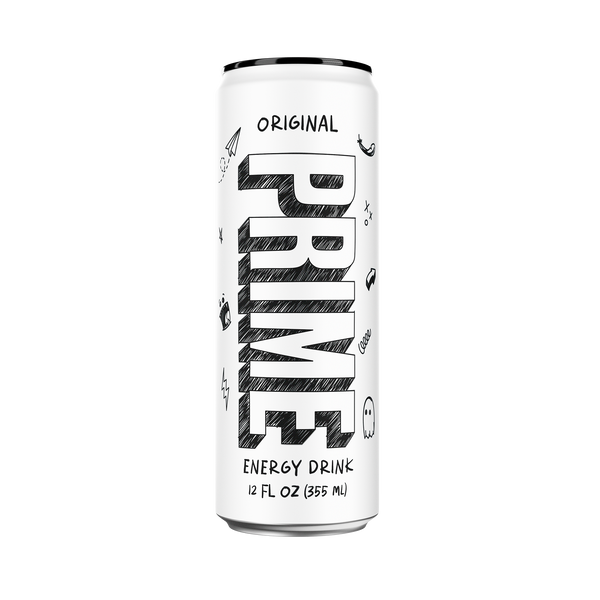Introduction to Prime Energy Drinks
Are prime energy drinks? In a world where energy is currency, Prime Energy Drink promise to keep you charged. They are the new players in the energy drink market. People ask, ‘are Prime Energy Drink healthy?’ Let’s explore. They come in vibrant cans and boast a unique formula. They target the fitness-conscious. Their marketing speaks of vitality and endurance. Yet, consumers question their health impact. This blog will demystify Prime Energy Drink for you.

Prime Energy Drink blend caffeine, vitamins, and flavors for that energy boost. They claim to be different from others. But how true is that claim? Join us as we delve deep into their contents and compare. We’ll also discuss their impact on health and physical performance. Lastly, we’ll offer guidelines for their safe consumption. Stay with us as we unveil the truth behind Prime Energy Drink.
Nutritional Content of Prime Energy Drinks
Understanding the nutritional content is crucial when determining if Prime Energy Drinks are healthy. Consumers should look at the label for a breakdown of what’s inside.
Here’s a snapshot of the typical nutritional ingredients found in Prime Energy Drinks:
- Calories: These drinks are often marketed as low-calorie options, appealing to those looking to maintain or reduce calorie intake.
- Sugar: Some Prime Energy Drinks may contain sugar. It’s important to note how much, as high sugar consumption is linked to various health issues.
- Caffeine: The key energizer in many drinks, the amount of caffeine can vary. It boosts alertness, but too much may cause negative effects.
- Vitamins: Many contain vitamins B and C, which have roles in energy metabolism and immunity respectively.
- Electrolytes: Components like potassium and sodium are included, which help in hydrating and replenishing lost minerals.
- Artificial ingredients: Flavors and colors might be added. Their effects on long-term health are still being debated.
Customers may find other ingredients like herbal extracts, taurine, or amino acids. It’s important to read the label and understand what each ingredient does. Knowledge of the nutritional content can help in making an informed decision about including Prime Energy Drinks in your diet.
Comparing Prime Energy Drinks with Other Brands
When assessing if Prime Energy Drink are healthy, a comparison with other brands is insightful. Here’s how Prime stacks up against its peers:
- Ingredient Transparency: Prime claims to list all ingredients clearly. This is not always the case with some brands, which can be less forthcoming.
- Caloric Content: Often, Prime Energy Drinks offer fewer calories than other market leaders. This point might be significant to health-conscious consumers.
- Sugar Levels: Prime Energy Drinks can have varying sugar contents. It is essential to compare them to others that may be higher in sugar.
- Caffeine Quantity: The caffeine in Prime drinks may be on par or less than in some popular brands. Nonetheless, assessing the amount is vital due to its effects on health.
- Vitamins and Electrolytes: Prime often includes vitamins and electrolytes. These are similar to what’s found in other energy drinks, contributing to their nutritional profiles.
- Artificial Additives: Some competitors use more artificial ingredients. Prime Energy Drinks claim to keep such additions minimal.
In conclusion, while Prime Energy Drinks do share similarities with other brands, they also present differences in ingredient transparency and content that could influence a consumer’s choice. It is these differences that may sway one’s opinion on whether Prime Energy Drinks are a healthier alternative or similar to the rest. Understanding these comparisons can guide consumers in making a more informed choice in their energy drink selection.
Potential Health Benefits of Consuming Prime Energy Drinks
Prime Energy Drinks, like many energy drinks, claim several health benefits.
- Mental Alertness: Caffeine is a key player. It helps to sharpen focus and improve concentration. For users seeking a mental lift, this can be a quick fix.
- Physical Stamina: The blend of vitamins and electrolytes in these drinks may aid endurance. This helps fitness enthusiasts push through intense workouts.
- Metabolism Boost: B vitamins present in Prime Energy Drinks are essential for energy metabolism. They might assist in maintaining a healthy metabolic rate.
- Hydration: Electrolytes such as potassium and sodium promote hydration. They are especially useful after exercise when your body needs to replenish fluids.
- Immune Support: Some energy drinks, including Prime, add Vitamin C. This antioxidant can be beneficial for the immune system.
Consumers may experience these benefits when consuming Prime Energy Drinks in moderation. However, it is crucial to balance consumption with awareness of personal health needs and limits. Too much of any energy drink, including Prime, could lead to negative effects. We will explore these potential side effects and health concerns in the next section.

Possible Side Effects and Health Concerns
While discussing the potential benefits of Prime Energy Drinks, it’s equally important to address the possible side effects and health concerns. Energy drinks, including Prime, can have certain adverse effects, especially when consumed in large amounts or too frequently. Below are some health concerns associated with the consumption of Prime Energy Drinks:
- Caffeine Overload: Excessive caffeine can lead to jitters, insomnia, and heart palpitations. It can be risky for those with heart conditions.
- Sugar Content Issues: If the energy drink contains sugar, it can spike blood glucose levels. This can contribute to weight gain and diabetes risk.
- Calorie Surplus: Although marketed as low-calorie, too many energy drinks can add extra calories to your diet, potentially leading to weight gain.
- Dehydration: Contrary to their hydrating claims, the caffeine in energy drinks can have a diuretic effect, leading to potential dehydration.
- Addiction Potential: Regular intake of caffeine can lead to dependence, making it hard to function without it.
- Digestive Distress: Some individuals may experience nausea or upset stomach from the ingredients in energy drinks.
- Nutrient Imbalance: High consumption of energy drinks can upset the balance of electrolytes, critical for muscle and nerve function.
It’s crucial for consumers to recognize these risks and consume Prime Energy Drinks wisely. Staying informed about the possible side effects helps in making healthier choices and avoiding the potential pitfalls of energy drink consumption. Next, we’ll delve deeper into the caffeine content and its implications on health.

Understanding the Caffeine Content in Prime Energy Drink
Caffeine is often a key focus when evaluating energy drink healthfulness. In Prime Energy Drink, caffeine levels are critical for the promised boost in alertness and energy. Here’s what you should know about the caffeine content:
- Caffeine Levels: Prime Energy Drink have varying amounts of caffeine. It’s crucial to check the label for exact figures.
- Effects on Health: While caffeine can enhance focus, overconsumption may result in negative health impacts.
- Comparison with Coffee: The caffeine in a can of Prime could be more or less than a typical cup of coffee. Comparing these can guide consumption.
- Individual Tolerance: Everyone has different sensitivities to caffeine. It’s important to understand your own tolerance level.
Consumers questioning ‘are Prime Energy Drink healthy?’ must weigh the caffeine pros and cons. It’s advantageous for quick energy lifts but requires careful management to avoid health issues. Balancing intake and monitoring your body’s reaction to caffeine is key. This helps ensure that Prime Energy Drink can be a part of a healthy lifestyle without the risk of caffeine overload.
Prime Energy Drink and Physical Performance
Prime Energy Drink market themselves as aids to physical performance. Here’s what consumers need to consider:
- Boosting Exercise Endurance: These drinks are designed to help athletes last longer during training and competition.
- Improving Workout Intensity: With caffeine and other ingredients, such drinks aim to increase the intensity of workouts.
- Faster Recovery: The electrolytes in Prime Energy Drinks purport to aid quick recovery after intense physical activity.
- Muscle Function: The vitamins and amino acids present may support muscle function during exercise.
However, it’s important to note the balance between potential benefits and risks. While some components in Prime Energy Drinks might improve physical performance, excessive consumption can lead to health issues discussed earlier. Therefore, moderation is key when incorporating these drinks into your fitness routine.
Guidelines for Safe Consumption of Energy Drinks
For those who consume Prime Energy Drinks or other energy drinks, safety is crucial. Here are simple guidelines to ensure you enjoy the benefits without risking your health.
- Know Your Limit: Start with a small amount. See how your body reacts before having more.
- Read Labels Carefully: Check for caffeine and sugar content. Be aware of what you’re drinking.
- Hydrate with Water: Drink plenty of water. Energy drinks are not a substitute for hydration.
- Balance Intake: Don’t replace meals with energy drinks. They should not be your main energy source.
- Exercise Caution: If you have health issues, particularly heart problems, consult your doctor before consuming.
- Avoid Mixing: Never mix energy drinks with alcohol. This can increase health risks.
- Moderation is Key: Limit your consumption. Too much can lead to the side effects mentioned previously.
By following these guidelines, consumers of Prime Energy Drinks can help maintain their health while enjoying the energy boost these drinks offer. Remember that moderation and awareness are vital in the safe consumption of any energy drink.
